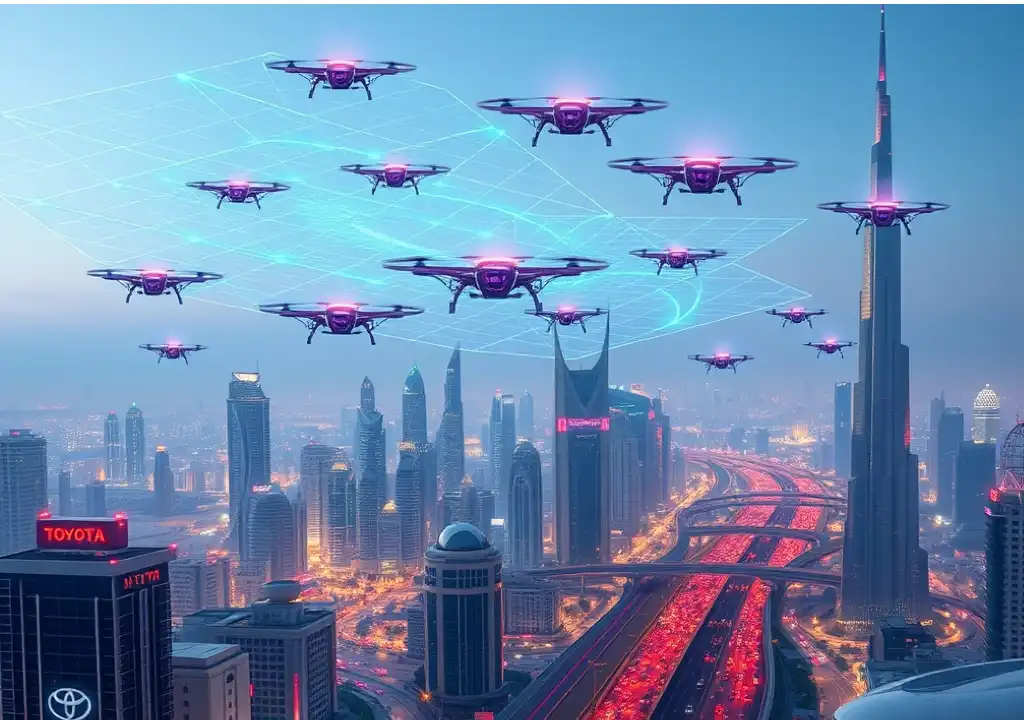As air taxis become more popular, analysts emphasize the importance of developing efficient vertiports and advanced traffic management systems to meet rising demand.
The air-taxi market is set for massive growth by 2029, with projections estimating it will expand from $4.9 billion to $80.3 billion, according to Spherical Insights, a market research firm. This surge is driven by the growing need for alternative transportation options and the worsening traffic congestion in urban areas, as noted in a report by Mordor Intelligence.
However, despite significant interest, electric vertical take-off and landing aircraft (eVTOL), which are designed to bypass ground traffic and travel between cities and airports, still face several hurdles before becoming mainstream.
The Challenges of Air Mobility
“Air mobility will revolutionize transportation, much like the car did for ground travel in the 20th century,” explained Amad Malik, an AI and aerospace expert. He added, “As this technology evolves, we’ll see a variety of flying vehicles, from delivery drones to air taxis and even flying ambulances. Managing this new traffic safely will become a significant challenge.”
To make air taxis a reality, not only do eVTOLs need to be approved by regulatory bodies and gain consumer trust in their safety, but they also require infrastructure for take-offs and landings—vertiports.
Regional Developments in Air Taxis
Aviation industry experts predict that Advanced Air Mobility (AAM) will begin to take off in North America and Europe later this decade, while the Middle East could see air taxis operating within the next few years. According to Airports International, Dubai is already making strides in this direction. Skyports Infrastructure has partnered with a local parking provider to create vertiports at key locations such as Dubai International Airport, Palm Jumeirah, Dubai Downtown, and Dubai Marina.
“There will be more vertiports in congested areas where traditional helicopter access is limited,” said Nicolas Zart, founder of Electric Air Mobility. “In the short term, these vertiports may be located on the outskirts of major cities as a testing phase before moving to central urban locations.”
The Role of Investment in Air Mobility
As eVTOLs are increasingly viewed as the future of urban air mobility, the market is attracting significant investment. Toyota recently announced an additional $500 million investment in Joby Aviation to support the certification and commercial production of its electric air taxi. In July, Stellantis, Chrysler’s parent company, pledged $55 million in Archer Aviation’s development.
Managing Aerial Traffic and Safety
Malik noted, “Managing air traffic for these new vehicles will be akin to upgrading a small-town intersection to a complex citywide traffic system with thousands of vehicles.” Current air traffic control systems are designed for a limited number of large aircraft and are not equipped to handle the influx of smaller, low-altitude vehicles. Without a cohesive traffic management solution, managing emergency flying vehicles and other aerial services will become increasingly difficult, potentially hindering their efficiency.
The Future of Air Taxis and Consumer Access
Although air taxis are currently aimed at wealthier customers, Vertical Aerospace believes the prices will eventually drop as production scales. This would make eVTOLs as affordable as an Uber ride, driving increased low-altitude air traffic.
“New technologies often begin with military applications and are then adopted by wealthier consumers, which drives mass manufacturing and lowers costs for the broader public,” said Zart. “At present, a single-seat eVTOL costs between $90,000 and $500,000, but prices will decrease as production volumes increase, bringing them closer to the price of a car or bus.”

